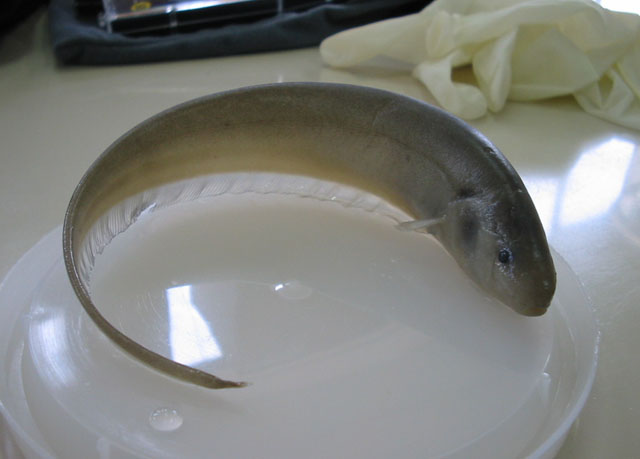| Sternopygidae (Glass knifefishes) |
| 140.5 cm TL (male/unsexed) |
|
benthopelagic; freshwater; pH range: 6 - 6.5; dH range: 4 - 15 |
| South America: Magdalena River basin; entire extent of the Amazon and Orinoco River basins below approximately 500 m elevation including Napo River of western Ecuador and Madre de Dios River of Peru; all drainages of the Guianas Shield; Atlantic drainages of northeastern Brazil (Tocantins, Parnaíba, Pindaré, Itapicuru, and Salgado rivers); São Francisco River basin; Rio de Janeiro, Brazil; Paraguay-Paraná River basin. |
|
Anal soft rays: 195-300 |
| Occurs in swamps, creeks, and river with lentic waters. Preys on small invertebrates, particularly the larvae of aquatic insects (Ref. 12225). Breeds before the start of the rainy season (Ref. 10645) or during the rainy season, with a fecundity count of 6473 eggs (Ref. 10643). Males persistently defend their territory and apparently make electric signals (by increased electric organ discharge (EOD) rates and interruptions thereof) to females passing by to draw in a spawning partner (Ref. 10605). Mature females' EODs are of higher frequencies than mature males (Ref. 10645). Plasma androgens modulate the EOD frequency during the breeding season (Ref. 10767). Embryos hatch on day 4; larvae begin to feed on day 11. The electric organ and electroreceptors are both present in the larva at the time of first exogenous feeding (Ref. 10605). Seems to reach sexual maturity at 1 year of age, based on breeding experiments (Ref. 10011). |
|
Least Concern (LC); Date assessed: 03 December 2020 Ref. (130435)
|
| harmless |
Source and more info: www.fishbase.org. For personal, classroom, and other internal use only. Not for publication.
